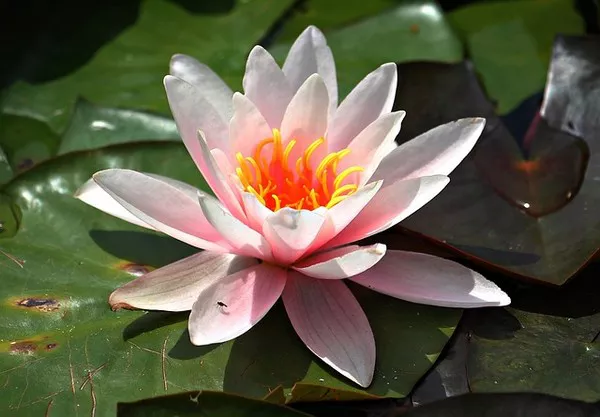Lilies are renowned for their exquisite beauty, captivating fragrance, and ability to enhance any garden or indoor space. However, like all living organisms, they go through a natural lifecycle, including flowering and subsequent dormancy. When lilies have completed their blooming phase, it’s crucial to provide them with appropriate care to ensure their overall health and vigor for future flowering seasons. In this article, we’ll delve into the steps to take when your lilies have finished flowering, ensuring their longevity and continued splendor.
1. Deadheading and Pruning
As the blossoms of lilies begin to fade and wilt, it’s important to remove them through a process known as deadheading. Deadheading not only enhances the aesthetic appeal of your garden but also encourages the plant to direct its energy towards the development of new growth rather than seed production. To deadhead lilies, carefully trim the faded flowers just below the base of the flower stem. Additionally, you can prune any yellowing or damaged foliage to maintain the plant’s overall appearance and health.
See Also: 10 Beautiful Flowers That Thrive in Shade with Aromatic Blooms
2. Allow the Foliage to Wither Naturally
After deadheading, resist the urge to cut back the foliage immediately. The leaves of lilies play a vital role in the post-flowering phase as they continue to capture sunlight and convert it into energy through photosynthesis. This energy is stored in the bulb and fuels the growth of future flowers. Let the foliage wither naturally over time, turning yellow and eventually brown. Once the leaves have completely withered, usually in late fall or early winter, you can gently remove them from the plant.
See Also: The Enduring Symbolism of the Lilies: Beauty & Spirituality
3. Watering and Fertilization
During the post-flowering phase, adjust your watering routine to match the changing needs of your lilies. While lilies are in bloom, they require ample moisture to support their vibrant flowers. However, as the blooming season comes to an end, gradually reduce the frequency of watering. Overwatering during this phase can lead to fungal diseases and bulb rot. Aim for a balance between keeping the soil slightly moist and allowing it to dry out slightly between waterings.
As your lilies transition into their dormancy period, consider applying a balanced, slow-release fertilizer. This helps replenish the nutrients in the soil that were used during the flowering phase and prepares the bulbs for the upcoming growing season. Follow the manufacturer’s recommendations for the appropriate type and amount of fertilizer, and be sure not to over-fertilize, which can be detrimental to the plant’s health.
4. Mulching for Insulation
Lilies are susceptible to temperature fluctuations during the winter months, which can potentially damage the bulbs. Applying a layer of organic mulch, such as straw or compost, around the base of the plants can provide insulation and protect the bulbs from extreme cold. Mulch also helps retain soil moisture and prevents weed growth, providing an overall healthier environment for your lilies during their dormant period.
5. Division and Transplanting
If your lilies have been growing in the same location for several years and have become overcrowded or their flowering has diminished, consider dividing and transplanting them. Dividing lily bulbs not only rejuvenates the plants but also provides an opportunity to propagate new plants. The best time to perform this task is in the fall, once the foliage has withered. Carefully dig up the bulbs, separate the smaller offsets from the main bulb, and replant them at the desired spacing and depth. Transplanting to a new location with well-draining soil and adequate sunlight can also breathe new life into your lilies.
6. Disease and Pest Management
Vigilance against common diseases and pests is crucial throughout the growing season, but it remains important even after your lilies have finished flowering. Inspect the plants regularly for signs of fungal infections, such as powdery mildew or botrytis, and take prompt action if detected. Remove any affected foliage and consider applying appropriate fungicides as recommended by gardening experts.
Similarly, watch out for pests like aphids, lily beetles, and slugs that may still pose a threat to your lilies. Handpicking or using environmentally friendly pest control methods can help mitigate potential damage to the plants.
Conclusion
Lilies are a symbol of elegance and beauty, gracing gardens and indoor spaces with their enchanting presence. Proper post-flowering care is essential to ensure the continued health, vitality, and future blooms of these remarkable plants. By following the guidelines outlined in this article, you can optimize your lilies’ chances of thriving throughout their lifecycle. From deadheading and pruning to managing water, fertilization, and pests, each step contributes to the overall well-being of your lilies and their ability to enchant you with their blossoms year after year.


